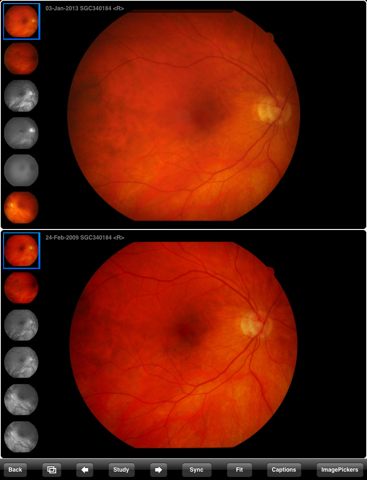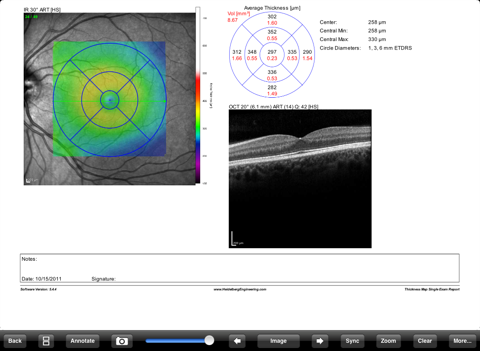
SMIPS Visualizer app for iPhone and iPad
Developer: Zamania Consulting
First release : 17 Jul 2013
App size: 3.33 Mb
The Visualizer app is a portable user interface for the SMIPS family of products. SMIPS (Smart Medical Image Processing System) has been designed to facilitate the storage, communication and retrieval of images from a variety of often incompatible sources. The objective of the system is to provide a physician-focused interactive experience which is not commonly found in IT-centric medical records systems that are optimized to passively store images for archival or billing, almost as an afterthought.
NOTE: Although a limited subset of its functionality may be used with images stored in the iPad photo library, the SMIPS Visualizer is NOT intended for purchase as a stand-alone product.
BACKGROUND
In addition to using medical images for the detection of obvious abnormalities, a physician should be able to manipulate them in order to observe changes, similarities and differences across multiple dimensions. These dimensions include not only space and time but also modality, including the type of equipment used for image acquisition, the techniques used to capture images, and the image type (for instance surface photography, x-ray photography or tomography). It is the observation of a set of differences and relationships - both natural and due to intervention - which provides a model to establish the appropriate course of treatment for each situation.
Unfortunately, there are a number of virtual roadblocks that get in the way of realizing this process efficiently. These range from incompatibility between vendor devices to systems which, while allowing the retrieval of images from anywhere, provide no means to place them in context, to manipulate them cleanly, or to reorganize them according to significance or meaning.
SMIPS is designed to overcome these obstacles using approaches derived from research in intelligent control, decision support, and self-learning systems. The core concept underlying these approaches is fairly simple: knowledge, and therefore intelligence, develops as a result of creating multiple, redundant, mutable connections between otherwise unremarkable - or possibly even conflicting - pieces of empirical evidence.
Multiresolutional associations created between originally unrelated items of information allow us to "see" patterns and identify causalities which might otherwise be missed. The Visualizer, together with the overall system of which it is a part, constitutes a step toward the creation of an ever more intelligent knowledge base with broad medical applications.
APPLICATIONS
* Clinical Setting: One-stop real-time and historical review by physician and, optionally, patient
* Telemedicine: Technicians with mobile equipment can work with physicians remotely
* Screening Centers: Centralized bulk screening to identify patients in need of follow-up care
* Collaboration: Real-time access by specialists for consultation or research
* Academic Testing: Students can review cases and save their detailed assessments for evaluation



